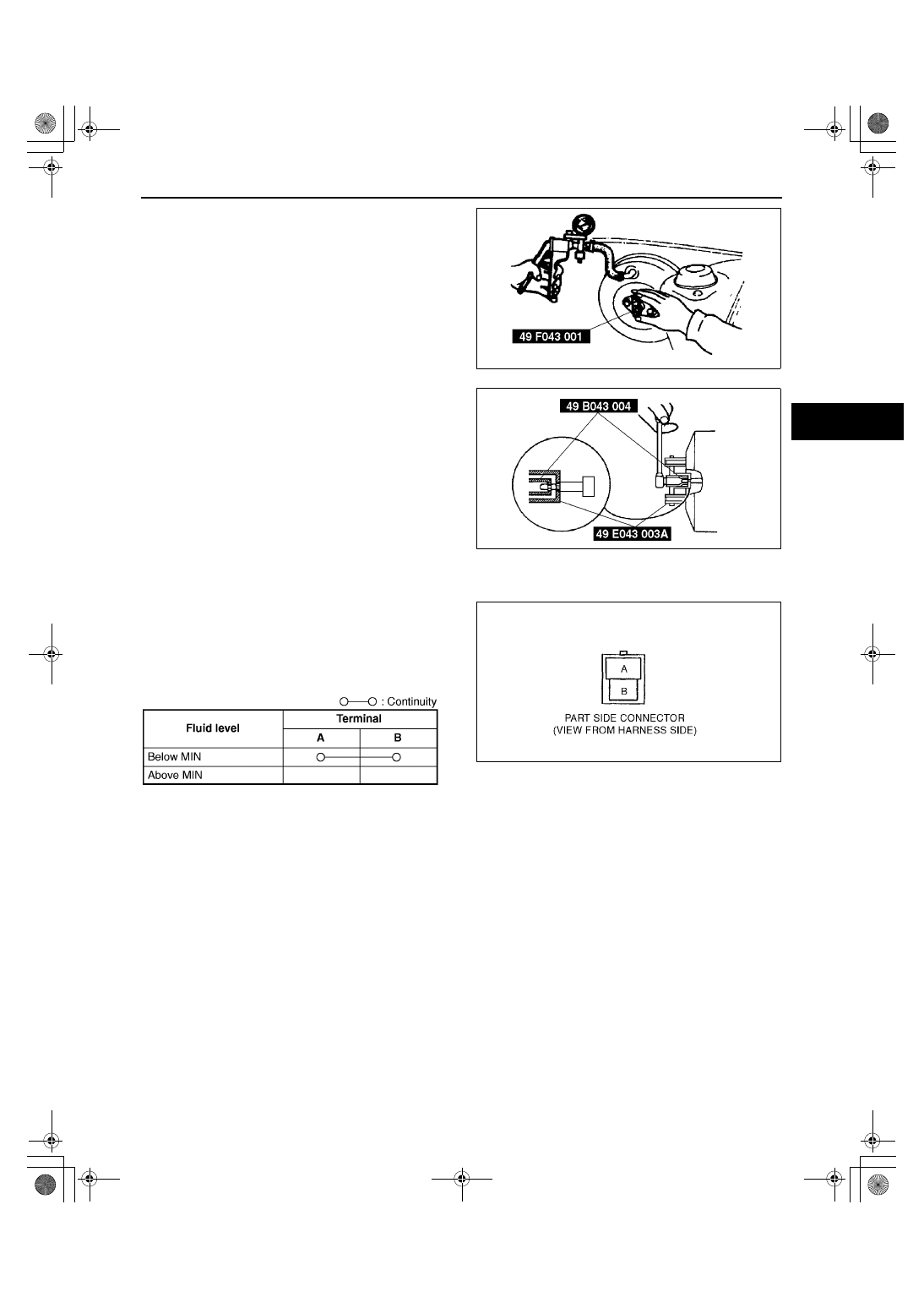Mazda Protege 5. Manual - part 210

CONVENTIONAL BRAKE SYSTEM
04–11–9
04–11
3. Invert the SST used in Step 1 and place it on the
power brake unit.
4. Measure the clearance between the end of the
SST and the push rod of the power brake unit.
•
If it is not 0.1—0.4 mm {0.004—0.016 in},
loosen the push rod locknut and turn the push
rod to adjust it using the SSTs.
End Of Sie
FLUID LEVEL SENSOR INSPECTION
A3U041143540W01
1. Disconnect the sensor connector.
2. Connect an ohmmeter to the connector.
3. Starting with the fluid level above MIN, verify that
there is no continuity.
4. Remove the brake fluid and verify that there is
continuity when the level is below MIN.
•
If not as specified, replace the sensor.
End Of Sie
X3U411WAB
X3U411WAC
Y3U411WA1
X3U411WAD
1712-1U-01G(04-11).fm 9 ページ 2001年6月29日 金曜日 午前10時3分